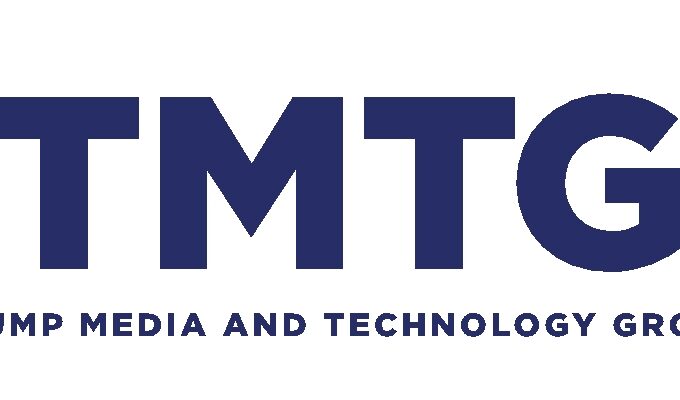
These Millennials Have Become The Top Decision Makers At IBM
By CALE GUTHRIE WEISSMAN for The Fast Company
A look at how IBM’s 5,000-strong “Millennial Corps” is helping the company stay relevant.
Supermodel Karolina Kurkova made an appearance at this year’s Met Gala in an intricately designed couture gown. The dress had two designers—one man, one machine. Fashion designer Marchesa worked alongside IBM’s supercomputer to design the dress. The computer helped Marchesa’s designers choose essentials like color palette and fabric. The dress was also wired with LED lights that changed color in tandem with social conversations about the gala in real time. It was undoubtedly a hybrid man-machine creation.
But why did IBM choose Marchesa to begin with? One reason was that a group of the company’s youngest employees recommended it.
The company sent out a survey to approximately 5,000 young employees under the IBM umbrella, asking which designers would be good to work with. Thanks to this engagement, the Marchesa collaboration commenced.
The group that received the survey is known as “Millennial Corps.” It’s a digital group of thousands of IBM employees who converse on their own internal platform, as well as attend local events. Samantha Klein and Sara Sindelar described the role of Millennial Corps members as “beta testers.” The two women are IBM’s first “intrapreneurs,” which is a new hybrid role for the purpose of fostering startup-like culture within the company. Millennial Corps is one of Klein and Sindelar’s bigger projects.
The whole project started out rather informally a little less than two years ago. Klein and three other IBM employees were asked by senior executives about ways they could change how younger employees engage and impact the company. IBM has 377,000 employees in 170+ countries, and management was trying to find a way to get more from the younger generation of workers.
Klein and the other three founding members decided to survey other young IBM employees across industries to see what they most wanted from their company. While answers varied, Klein says two things stood out: One, the millennial employees wanted to be able to work on projects they were passionate about. Two, they liked the idea of having a direct pipeline to the top decision makers.
Since then, Millennial Corps has ballooned in size to more than 5,000 people. It consists of a self-selecting group of IBM employees who consider themselves part of the younger generation. According to Klein and Sindelar, membership happened organically—generally through word of mouth of other members. But it’s become an international group with over 65 countries represented. Members connect via IBM’s own digital platform, allowing them to chat with each other. They also frequently receive surveys about potential projects IBM may be spearheading. The projects range from the Marchesa project to enterprise app proposals IBM is spearheading.
A LEGACY COMPANY LEARNING HOW TO REMAIN RELEVANT
The engagement, say Klein and Sindelar, generally come in the form of surveys and early tests. “IBM will be launching a new product, we’ll have the Millennials Corps try it out,” says Klein. The feedback elucidates what’s working, what isn’t, if any design fixes need to be made, etc. Most recently, the group has been checking out a new core website that’s yet to publicly launch.
But there’s another dimension too. According to Matthew Graham, it’s a way to feel connected with the hundreds of thousands of employees at the company. Graham is a technical consultant in the U.K. who is considered a Millennial Corps “ambassador” (a kind of regional leader of each sub-Corps). “We are a massive massive organization,” he says. “It gives us a way to feel connected.” He adds that it feels akin the student politics he did in university.
The thing about Millennial Corps—along with any other study or article you find that puts the sentiments of “millennials” into a giant bucket—is that it’s self-selecting. There is no mandate for IBM employees under the age of 30 to join the platform. The people interviewed for this article were all enthusiastic, ambitious, and likely welcomed the “millennial” moniker. The question remains whether such a group could be illustrative of any entire age population. Or worse, if such an endeavor could be read as pandering or pigeon-holing. Those participating, however, impress the fact that they’re able to get a direct pipeline to the top, which is rare for such a large organization.
IBM is hiring aggressively at the moment. According the company, it brought on 70,000 new employees last year, many of whom were early in their career. Millennial Corps’ growth is undoubtedly something the company views as good for retention. While the company doesn’t disclose such data, a recent PayScale survey found that 23% of IBM employees interviewed said they’d be interested in leaving the company for a startup.
IBM positions itself as a legacy company learning how to remain relevant. Thus, the company is looking for ways to prove that it engages with all generations. Both Klein’s and Sindelar’s careers have advanced thanks to this need, as well as the ever-growing Millennial Corps. Klein worked in marketing for IBM and Sindelar advertising. This year they acquired the “intrapreneur” titles, which meant they work with the company as a whole to figure out better ways remain agile. “You don’t have to be a startup to innovate,” says Klein.
But is a focus group really a revolutionary business strategy? For people like Klein and Sindelar, it’s about how the company positions itself toward the generation and heeds the advice. Says Sindelar, the point isn’t just about the surveys and testing; it’s about “mobilizing [this generation] locally.” They say they want the tens of thousands of young people at IBM to feel passionate about the company and the projects they’re working on. One way to do this is to connect them digitally and give them a way to provide feedback to top brass.
The top brass, it must be said, do seem to be listening. The feedback has impacted many of IBM’s recent decisions, and the company is hosting a big event with all the Millennial Corps ambassadors to meet with the executive team, including CEO Ginni Rometty. Graham will be attending the event next month. He sees it as a chance to fix internal bureaucracies. One way to be more amenable to young employees is to be more agile, like a tech startup. “How do we improve our processes and speeds?” he asks.
This sort of digital collective may soon be a corporate trend. One project Klein and Sindelar are working on is bringing the Millennial Corps beyond IBM. They have shared the idea with other multi-million dollar companies, who are now beginning to adopt their own millennial corps. “A lot of companies have employee resource groups that are millennial focused,” says Klein. She adds that they have begun sharing IBM’s findings to help the others boost engagement.
How successful this be will industry-wide remains to be seen. While IBM seems to be learning from the younger generation and heeding advice, simply having a digital forum dubbed “for millennials by millennials” likely won’t do the trick. But perhaps having such an outlet does help newcomers feel a better sense of belonging. Or at least something a little bit more than business as usual.
First appeared at Fast Company





